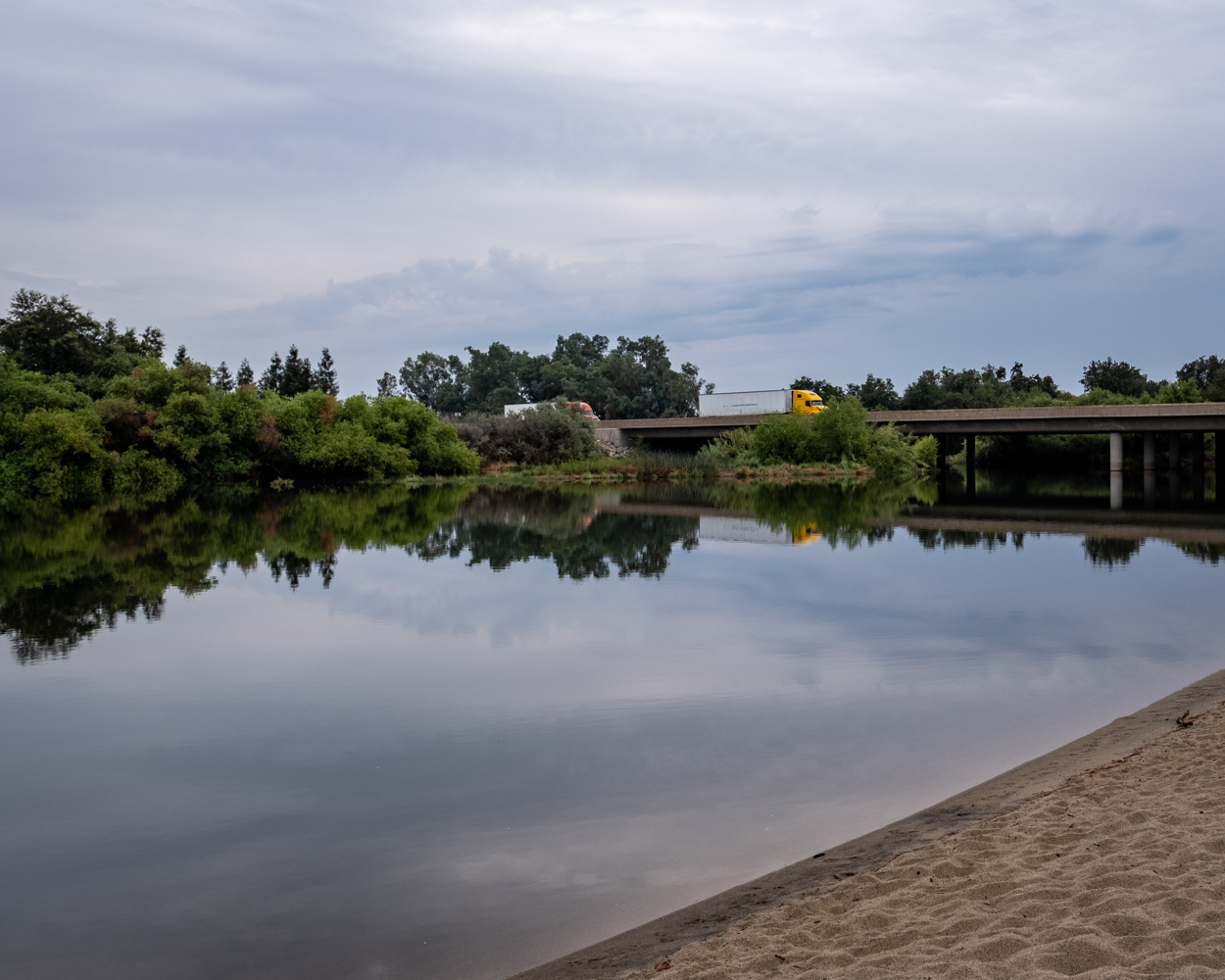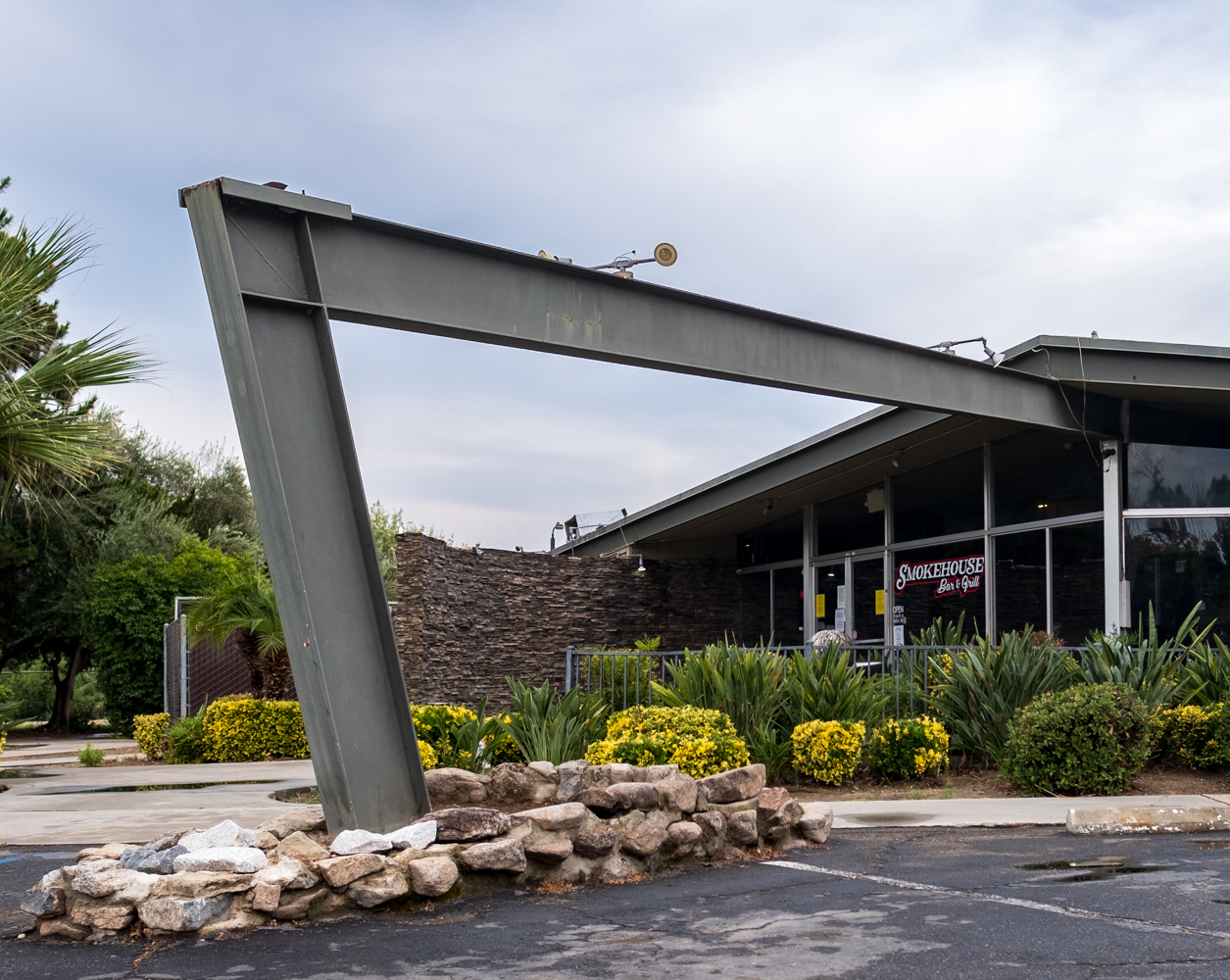 California State Route 99 runs through the Central Valley. The inland highway serves Bakersfield, Tulare, Visalia, Kingsburg, Selma, Fresno, Madera, Merced, Modesto, Stockton, Sacramento, and goes all the way up to Chico. Many of these cities are longtime agriculture towns. With the exception of Bakersfield, Fresno and Sacramento, there isn't a ton of modern architecture. However, there are some nuggets hidden here and there.
California State Route 99 runs through the Central Valley. The inland highway serves Bakersfield, Tulare, Visalia, Kingsburg, Selma, Fresno, Madera, Merced, Modesto, Stockton, Sacramento, and goes all the way up to Chico. Many of these cities are longtime agriculture towns. With the exception of Bakersfield, Fresno and Sacramento, there isn't a ton of modern architecture. However, there are some nuggets hidden here and there.

Along the highway, next to the King River in Kingsburg is a 1959 restaurant designed by Palm Springs architect Hugh Kaptur. Originally it was named the Pawling's Lakeside Inn. Joseph Stark Pawling (1921-2002) developed the restaurant along as part of a larger recreational project. He was a home builder in Palm Springs and did a number of spec houses with Donald Wexler. Pawling most likely met Kaptur through Wexler since In the late 1950's Kaptur apprenticed in the Wexler & Harrison architecture firm.
Pawling's Lakeside Inn first opened in 1958. According to a 1958 newspaper article, Pawling designed the initial project himself. He purchased 46 acres and built two marinas, restaurant, motel, RV park and formed a lake that would be used for boating, water skiing and fishing.
A fire destroyed the property in 1959 but he quickly rebuilt the development and this time Hugh Kaptur was involved.
At some point in the 1960s the name of the property was changed to Smokey's Riverland Resort.
That looks like the protruding ridge beam of the restaurant poking out on the top right of this photo.
Source: Fresno Bee, 1969
Today the restaurant is called
SmokeHouse Bar & Grill. I was there early in the morning so I didn't get the chance to peek inside. Also, this view looks like the Walter S White
Wilcockson House, which was built the same year. Both being Palm Springs area architects, it seems like Kaptur and White would have known each other.
This move is classic Kaptur. See the Impala Lodge, 1958.
North on the 99 is central Kingsburg. I wasn't planning on stopping in town but I spotted this building from the highway.
The main strip in town is pretty darn cute and as you can see here, continues to celebrate the town's Swedish heritage.
In 1873 the City of Kingsburg, a small railroad town on the Valley Line of the Central Pacific Railroad, was established. During this time, Swedish natives settled in this new town called “Kings River Switch” a flag stop on the Central Pacific Railroad. In 1894, the spelling of the City changed to Kingsburg, and in 1908 Kingsburg was officially recognized as a town. By the year 1921 the Swedish-American population was up to ninety-four percent within a three mile radius, because of this the community became known as “Little Sweden”. In order to keep with its Swedish heritage the City continues to design many of the buildings with a Swedish architecture. Source: Kingsburg In addition to giant Dala horses along Draper St, Swedish folk music is played through speakers mounted on the light poles.
It's hard not to take a photo of a pleated roofline.
Kingsburg is all in on the Swedish Village branding.
 California State Route 99 runs through the Central Valley. The inland highway serves Bakersfield, Tulare, Visalia, Kingsburg, Selma, Fresno, Madera, Merced, Modesto, Stockton, Sacramento, and goes all the way up to Chico. Many of these cities are longtime agriculture towns. With the exception of Bakersfield, Fresno and Sacramento, there isn't a ton of modern architecture. However, there are some nuggets hidden here and there.
California State Route 99 runs through the Central Valley. The inland highway serves Bakersfield, Tulare, Visalia, Kingsburg, Selma, Fresno, Madera, Merced, Modesto, Stockton, Sacramento, and goes all the way up to Chico. Many of these cities are longtime agriculture towns. With the exception of Bakersfield, Fresno and Sacramento, there isn't a ton of modern architecture. However, there are some nuggets hidden here and there.
.jpg)










